This month stargazers and night-sky observers will be able to see the four planets Jupiter, Saturn, Uranus and Neptune in a planetary parade.
Observers with Go-To telescopes will be able to navigate from one world to another just by pressing a few buttons
Less experienced observers will find they have help from the Moon, which will hopscotch along the planetary parade over the course of a week in December.
For more advice, find out how to locate planets in the night sky and our guide to visible planets tonight.
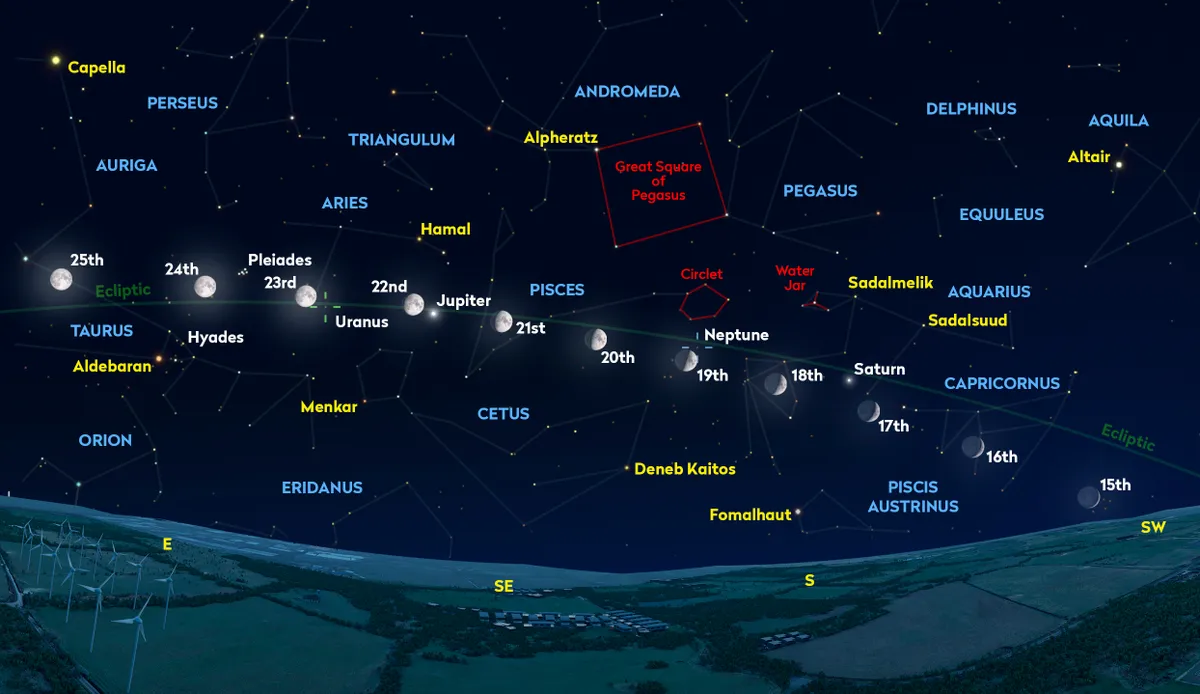
Observing the planet parade in December
Go out on any clear night or morning, and chances are there will be at least one planet in the sky you can see with the naked eye or through binoculars or a telescope.
Sometimes a couple of planets come together in the same part of the sky – a grouping astronomers call a conjunction – which can be a lovely sight and very photogenic too.
Occasionally, if they align just the right way, we’re treated to a veritable parade of planets spread out across the sky in a cosmic daisy chain.
This is exactly what’s going to happen this month: all of the outer planets will be on view in the sky after sunset, conveniently arranged in a line stretching from the southeast to the southwest.
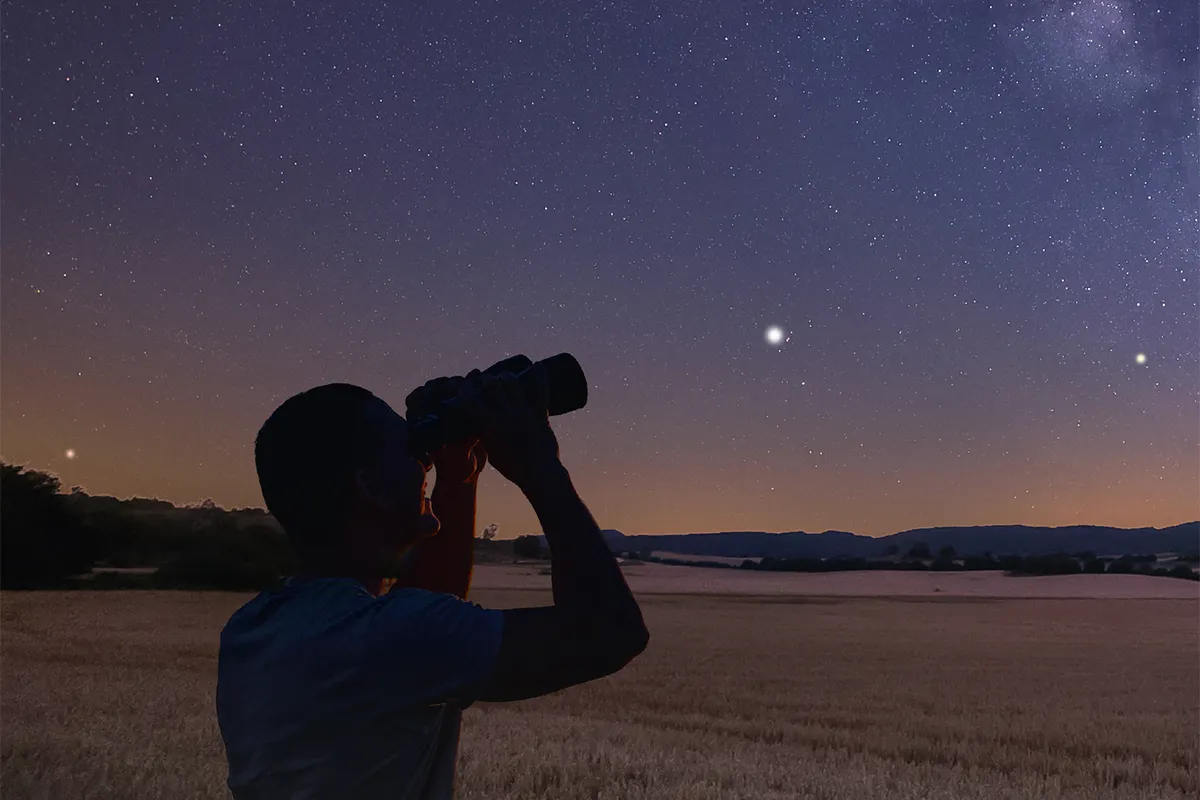
The planets will be spread along part of an imaginary line in the sky called the ecliptic.
This is a narrow band of sky which the Sun and its planets appear to move along as we, and they, orbit the Sun.
The gas giants Jupiter and Saturn will be visible to the naked eye, as they always are, looking like bright stars, but you’ll need some help seeing the two farther-away ice giants.
With a magnitude of 5.8, Uranus will be technically visible to the naked eye, but will probably require help from a pair of binoculars.
Neptune, the most distant world in our Solar System, will be visible through binoculars too, but a telescope will really help you identify it by highlighting its subtle colour.
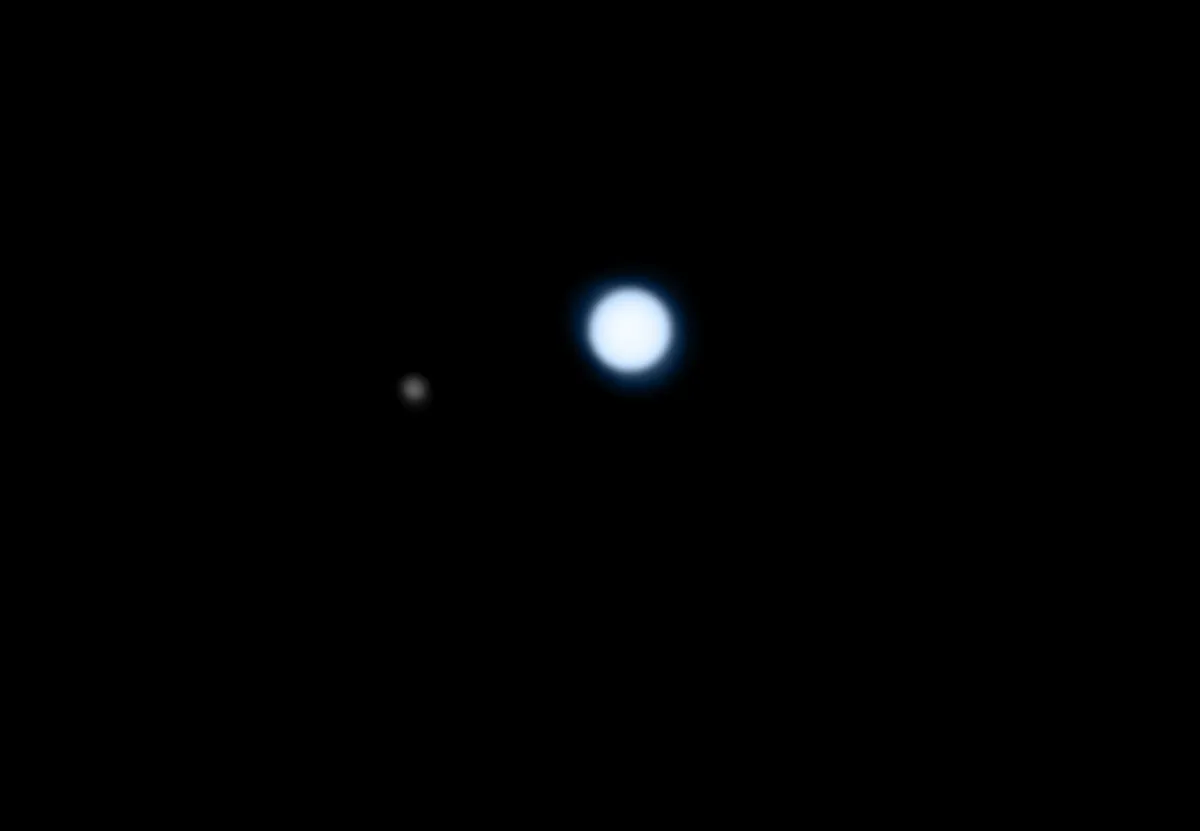
If you don’t know the night sky very well, or if you don’t have much experience of planet spotting, don’t worry.
During the latter part of December, the Moon will move down the planetary parade line, encountering each planet in turn.
This, along with the information in this guide – will help you identify which one is which. Let the tour begin!
December parade, planet-by-planet
Saturn
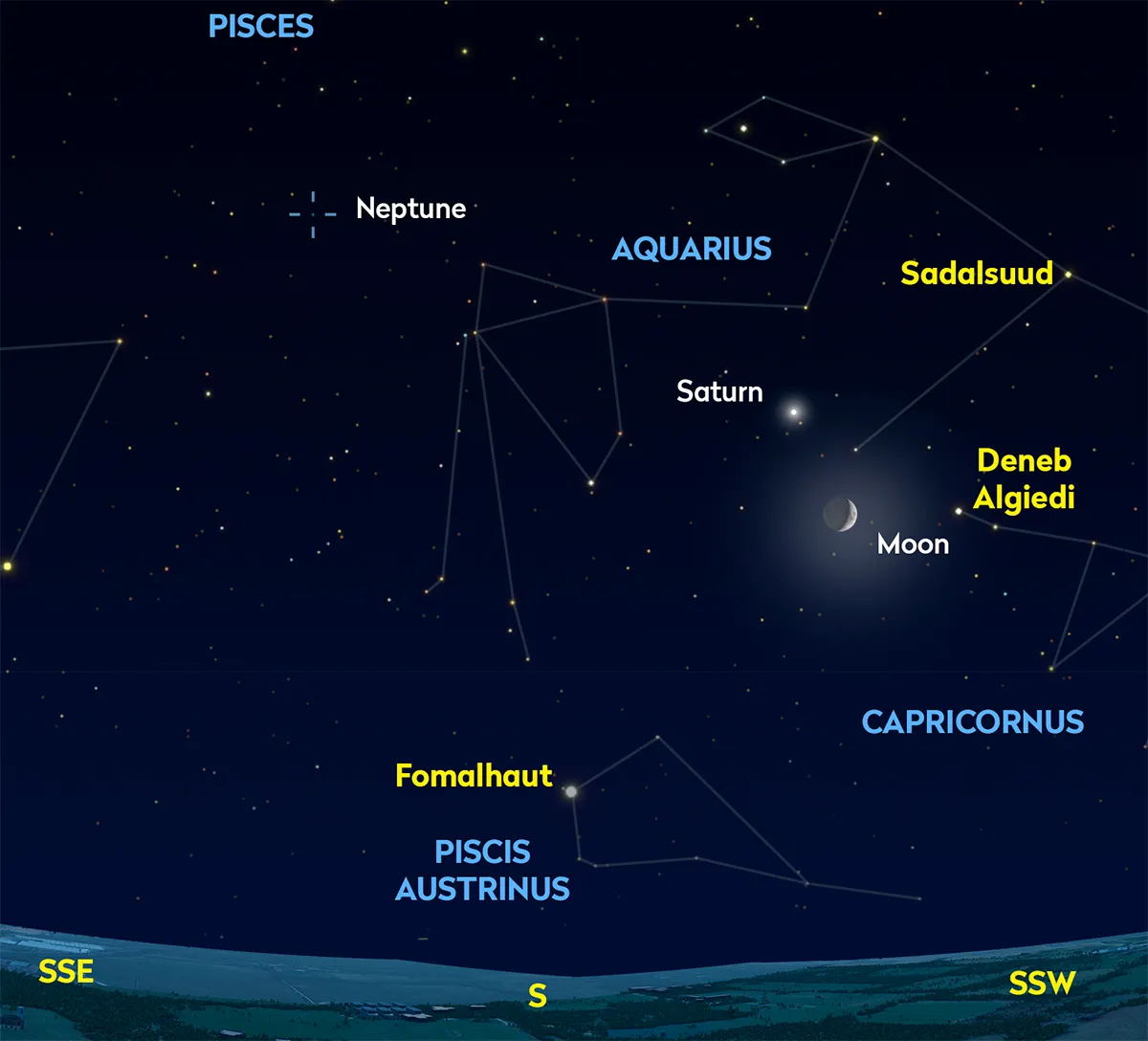
We’ll start our December planet parade by going out at around 17:00 UT on 17 December and looking towards the south.
There – unless you have a lot of trees, tall buildings or hills on your skyline – you’ll see Saturn shining low in the darkening twilight sky.
Saturn will be in the constellation of Aquarius, looking like a yellow-white star beneath the constellation’s well-known, spearhead-shaped Water Jar asterism.
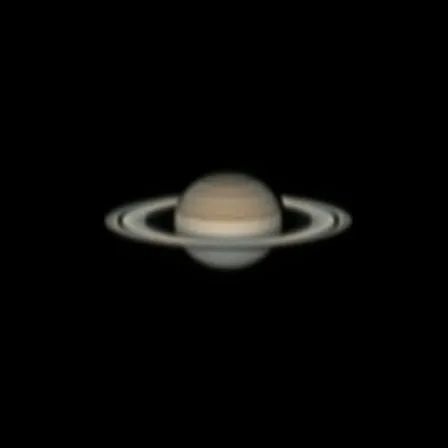
Shining at magnitude 0.9, Saturn will be clearly visible to the naked eye, but you won’t have long to see it; by mid-month, Saturn will be setting in the southwest at around 21:30 UT.
Saturn is of course famous for its beautiful system of icy rings that have entranced astronomers ever since Galileo glimpsed them with his first crude telescope in 1610.
Today we have stunning high-resolution images of Saturn's rings and the gaps between them, taken by the Voyager crafts as well as the NASA Cassini mission, Hubble Space Telescope and James Webb Space Telescope too.
If you want to see Saturn’s rings for yourself you’ll need a telescope, because standard binoculars aren’t powerful enough.
And don’t delay: the rings are slowly closing up from our perspective on Earth, and within a few years will be edge-on to us and all but invisible.
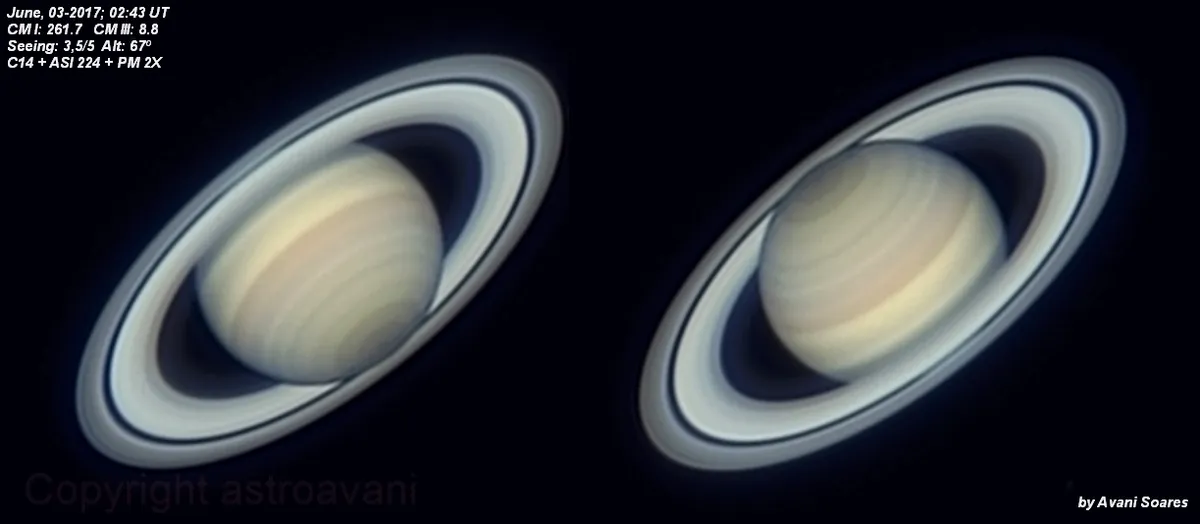
A 6-inch telescope and high magnification will show you the widest gap in Saturn’s rings, the dark Cassini Division.
Through a larger telescope under a clear, dark sky you’ll be able to pick out smaller ring gaps in moments of good seeing too.
But there’s more to Saturn than its magnificent rings.
Even a small telescope will reveal that its creamy disc is flattened at its poles, and will also show you its largest moon, Titan.
Titan is as big as the planet Mercury, and if it orbited the Sun on its own it would be big enough to be considered a planet in its own right.
On the evening of 17 December, a lovely crescent Moon will be shining to the lower right of Saturn, helping you to identify it.
The following evening, the Moon will have moved to shine on the planet’s left.
For more advice, read our guide on observing Saturn with a telescope.
Neptune
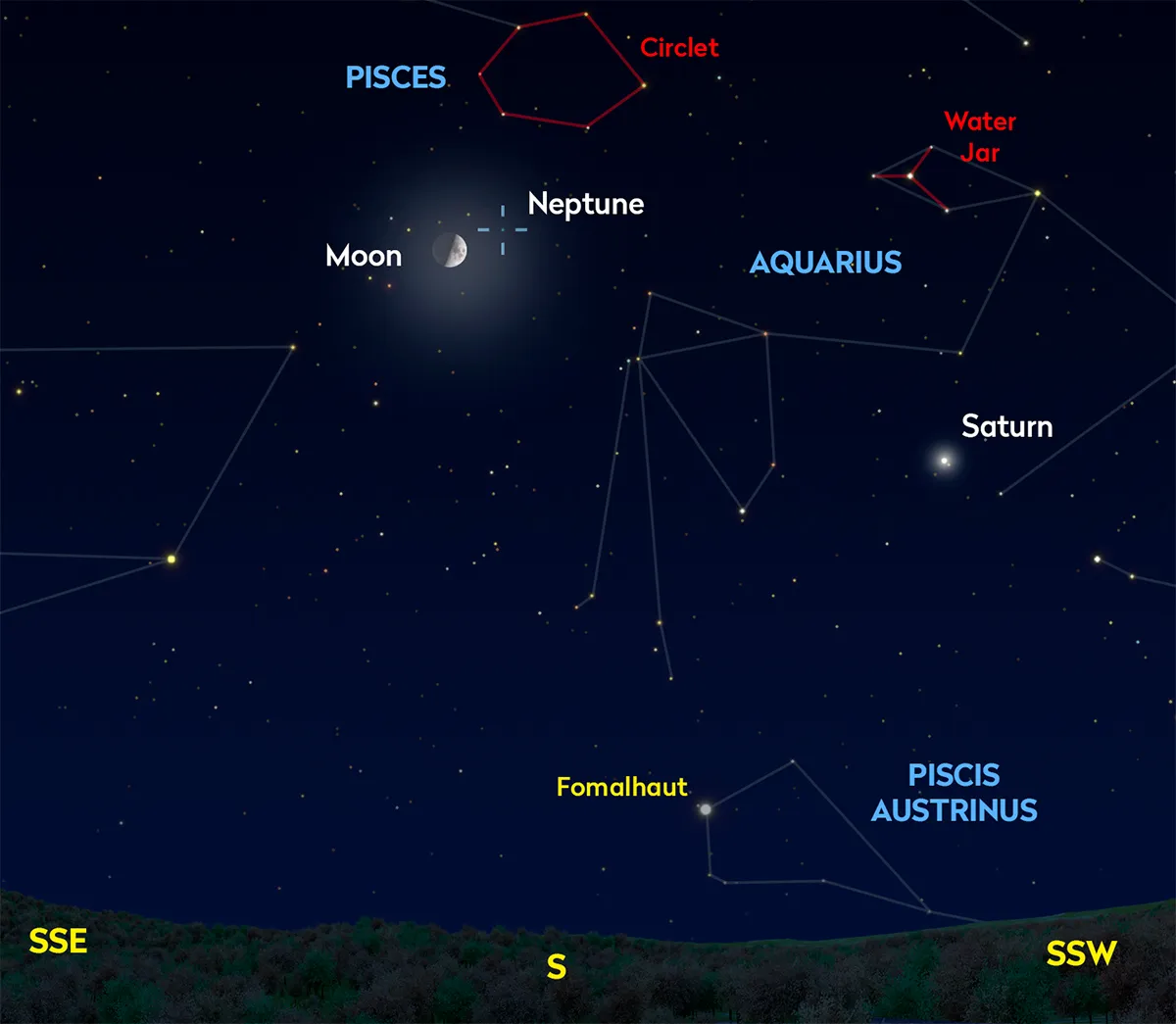
The next stop on our December planet parade is Neptune.
This ice giant world is four times the size of Earth, with a system of dark rings and a small family of icy moons.
Ever since Pluto was stripped of its planetary status in 2006, Neptune has officially been the farthest planet from Earth.
In fact, Neptune is so far away that Earth completes 165 orbits of the Sun in the time it takes Neptune to travel around it just once.
In December 2023, Neptune will be around 4.5 billion kilometres away and its faint light will take more than four hours to reach us.

In December you’ll find Neptune in the constellation of Pisces, just below the well-known Circlet asterism and a little more than 22° over to the east, or left, of Saturn.
Unlike Saturn, Neptune will be much too faint to see without some kind of optical assistance, even if you’re lucky enough to be looking for it in a dark sky with no light pollution.
With a magnitude of 7.9, Neptune is visible in binoculars, but you have to know exactly where to look.
There are so many stars of the same brightness around it that it’s very hard to pick it out in the December planet parade.
However, if you have a telescope it will enhance the planet’s blue-green hue.
Using a large telescope and high magnification you’ll see the planet’s disc and really appreciate its subtle turquoise colour too.
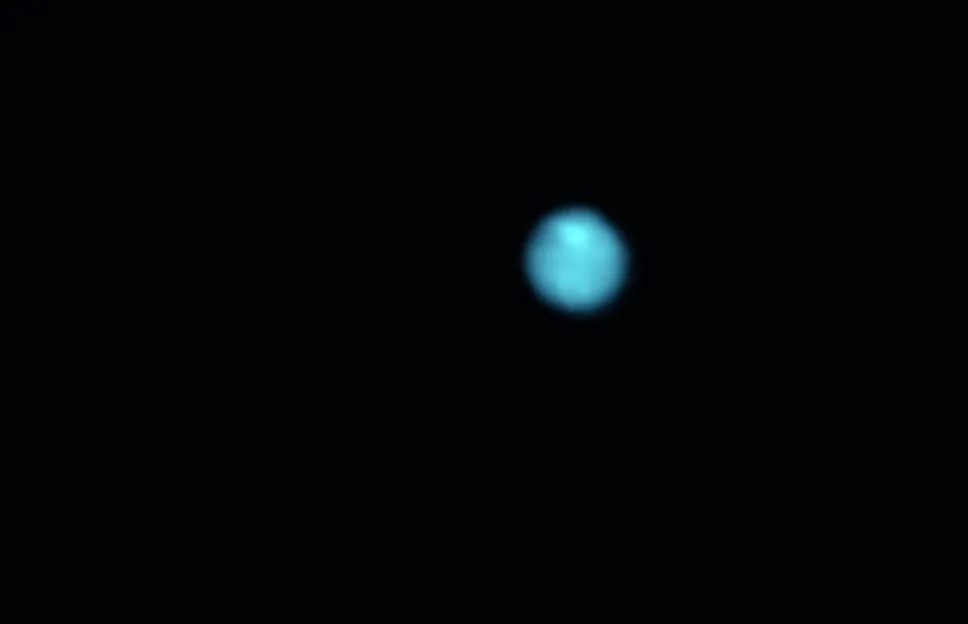
Just don’t expect to see any of the dark cloud bands or bright storm systems that Voyager 2 did in 1989.
Even though those images regularly and very misleadingly appear on telescope boxes…
Faint Neptune will be the trickiest planet to identify in the December planet parade, but help will come from the Moon.
On the evening of 19 December, the first quarter Moon will shine just 2.5° away from Neptune.
On that evening, if you centre the Moon in your binoculars, Neptune should be in the same field of view, a pale blue-green ‘star’ shining away to its upper right.
Jupiter

Of all the planets out on parade in the evening sky in December, Jupiter will be the easiest to find and identify because it will be the brightest.
If you look to the southeast as the sky grows dark, Jupiter will be there, right in front of you, blazing away like a blue-white star, brighter than any other star or planet in the sky at that time.
It’s no surprise that Jupiter is so bright, because even though it is around 638 million kilometres away from us in December, it is the largest planet in our Solar System, so reflects a lot of light in our direction.
A bloated ball of hydrogen and helium gas with a rocky core, the gas giant planet could contain a thousand Earths with room to spare.

As impressive as Jupiter looks to the naked eye, it looks much more impressive with a little magnification.
If you swing your binoculars towards Jupiter you’ll see up to four little stars shining close to it.
These are actually some of its extended family of moons (95 at the last count!).
The largest of Jupiter's moons are known as the Galilean Moons.
The number you will see, and how they are arranged, will depend on which night you look; both change as the moons whizz around Jupiter like cyclists on a race track.
Seen through a telescope, Jupiter is a wonder.
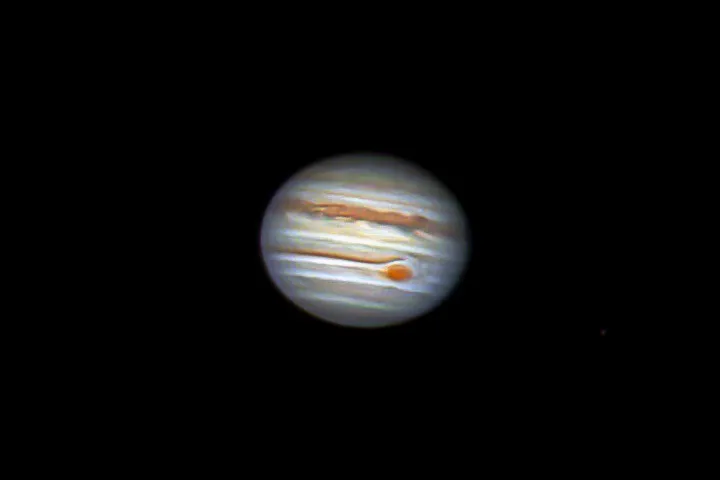
Even a small telescope will show its pale disc crossed by two dark cloud bands, and larger instruments will also show its famous Great Red Spot storm system, more light and dark bands, and colourful ovals and streamers of material in its atmosphere.
Because Jupiter will be so bright, you won’t need any help finding it in the sky.
But on the evening of 22 December the waxing gibbous Moon will be very close to Jupiter, shining just 4° away to its upper left.
The pair will be a lovely sight in binoculars for those under clear skies.
Also, when you spot Jupiter you’ll notice that it is shining to the right of a misty patch of light.
Look more closely at that and you’ll see this is the famous Pleiades or Seven Sisters star cluster.
For more advice, read our guide on how to observe Jupiter through a telescope.
Uranus

The final stop on our December planet parade is Uranus.
Like Neptune, Uranus is an ice giant planet, a frigid world with dark rings and cold, dark moons. It is so far from the Sun that its year is 84 Earth years long.
Although Uranus is a giant world more than four times the size of our own, its great distance from us – 2.8 billion kilometres in December – means it is very faint.
With a magnitude of 5.7, it is just visible to the naked eye, but really only if you’re looking for it in a dark sky well away from light pollution.
Even then there are so many stars of the same brightness as Uranus that you'll have to use a good chart to pin it down in the December planet parade.

The planet is more easily identified using binoculars, which show how its subtle and unusual green colour makes it stand out from the myriad blue and white stars twinkling around it.
In December, Uranus will lie in the constellation of Aries.
It will already be above the horizon at sunset and will set around 05:00 UT the next morning, giving you plenty of time to find it shining roughly half-way between bright Jupiter and the Pleiades star cluster.
Jupiter is key to finding Uranus. If you aim your binoculars at Jupiter and then pan them very slowly to the left, you’ll soon come across a ‘star’ with a pale, almost mossy-green hue.
That’s it; that’s Uranus.
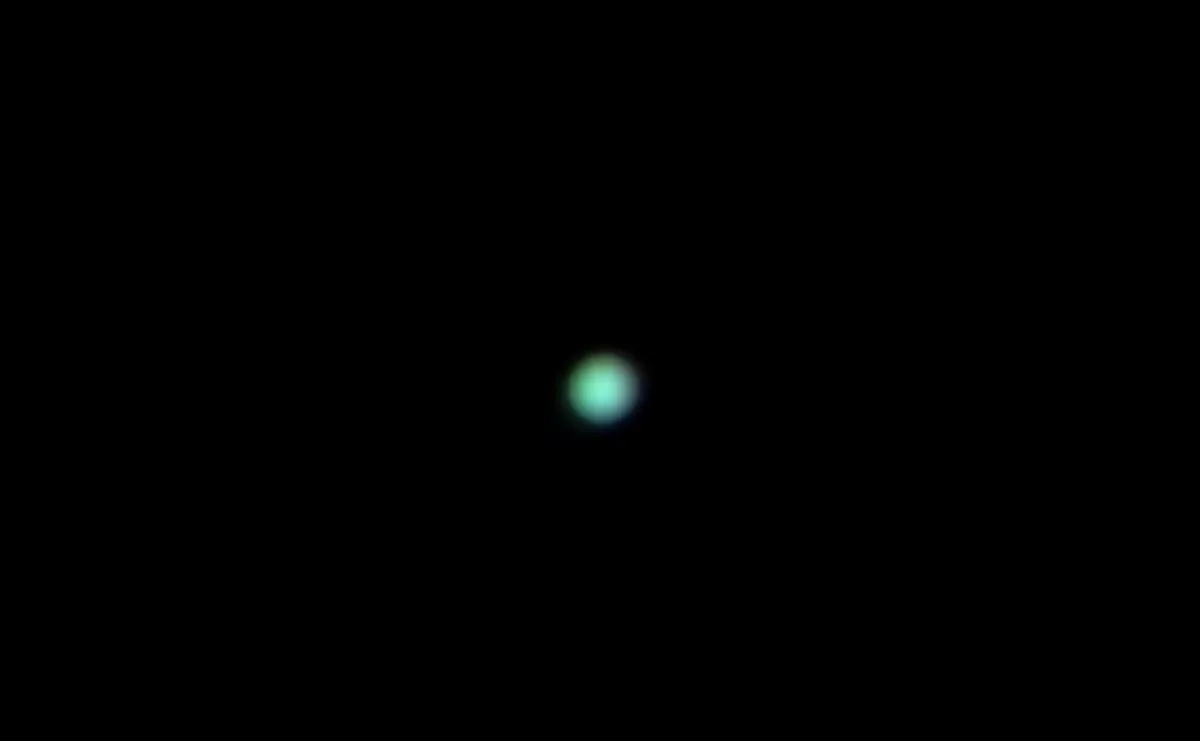
Your binoculars won’t be powerful enough to resolve the planet’s disc – you’ll need a telescope for that.
And it’s so distant that the disc will only be small and featureless, even under high magnification.
Jupiter and the Pleiades will be very useful pointers to help you find Uranus.
If you need extra help, look for the almost-full Moon on the evening of 23 December, just under 4° away, to its upper left.
This guide appeared in the December 2023 issue of BBC Sky at Night Magazine
